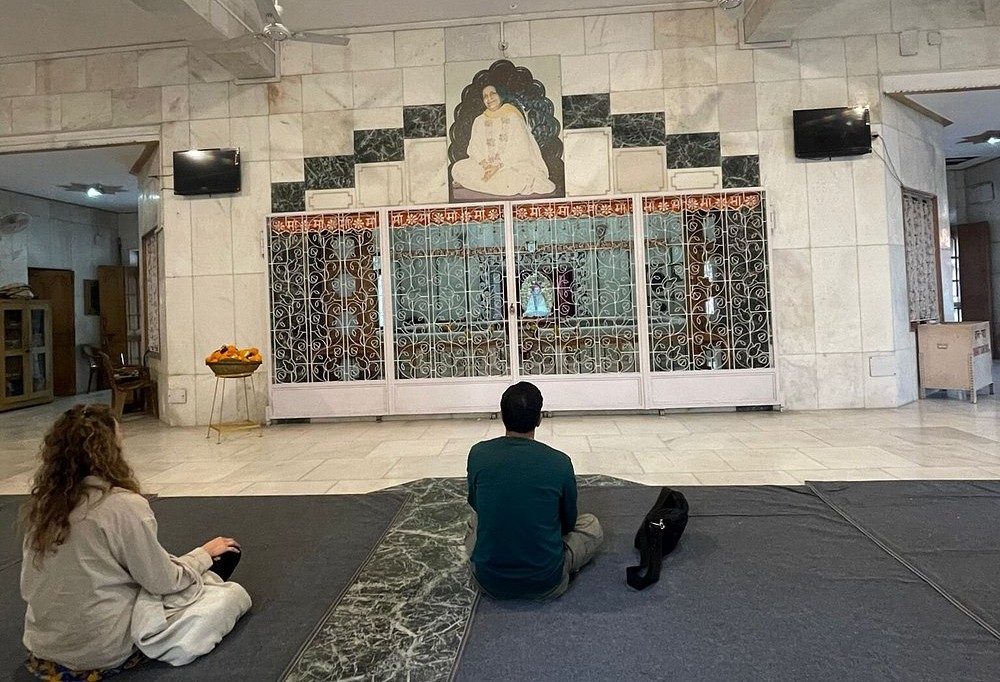A Morning Walk to Maa Anandamayi Ashram Haridwar, India
On the third day of my six-day Haridwar trip, I took a refreshing break from Hindi classes and the rains of Mussoorie. I set out for a morning walk to Maa Anandamayi Ashram Haridwar, just over 4 kilometers from Har-Ki Parui in Haridwar.
Devotees built many Anandamayi Ashrams across India, including the one in Almora where I spent much of July and August. However, the Kankhal ashram holds special significance because it houses Maa Anandamayi’s samadhi. In Indian tradition, a samadhi refers to the resting place of a guru’s physical body after their earthly journey ends. The term also signifies a state of eternal bliss—the merging into oneness when a teacher completes their work on earth.
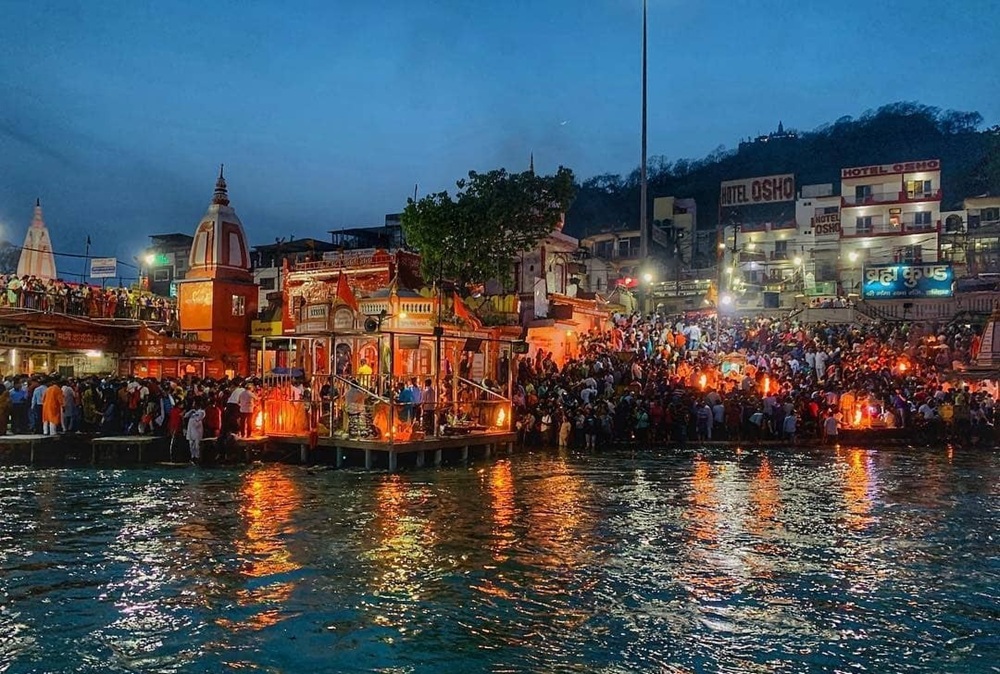
The walk from my hotel to the ashram covered about 4.5 kilometers. Although Haridwar serves as a hub for Hindu religious practice, the city rarely feels peaceful. Narrow streets struggle to hold the constant flow of traffic, and drivers of rickshaws, Vikrams (larger auto-rickshaws), and scooters blast their horns nonstop. The relentless noise often feels overwhelming, and without earplugs I usually press my fingers against my ears while walking through the chaos.
This morning felt different. I started early, before traffic filled the streets. Google Maps guided me southwest through a narrow lane that eventually ran along the Ganga Canal. The British constructed this canal decades ago, and today it forms the heart of Haridwar. The city’s famous ghats and clocktower sit beside this canal rather than on the banks of the natural river channel.
Suggested Read: Beatles Ashram in Rishikesh, in search of enlightenment
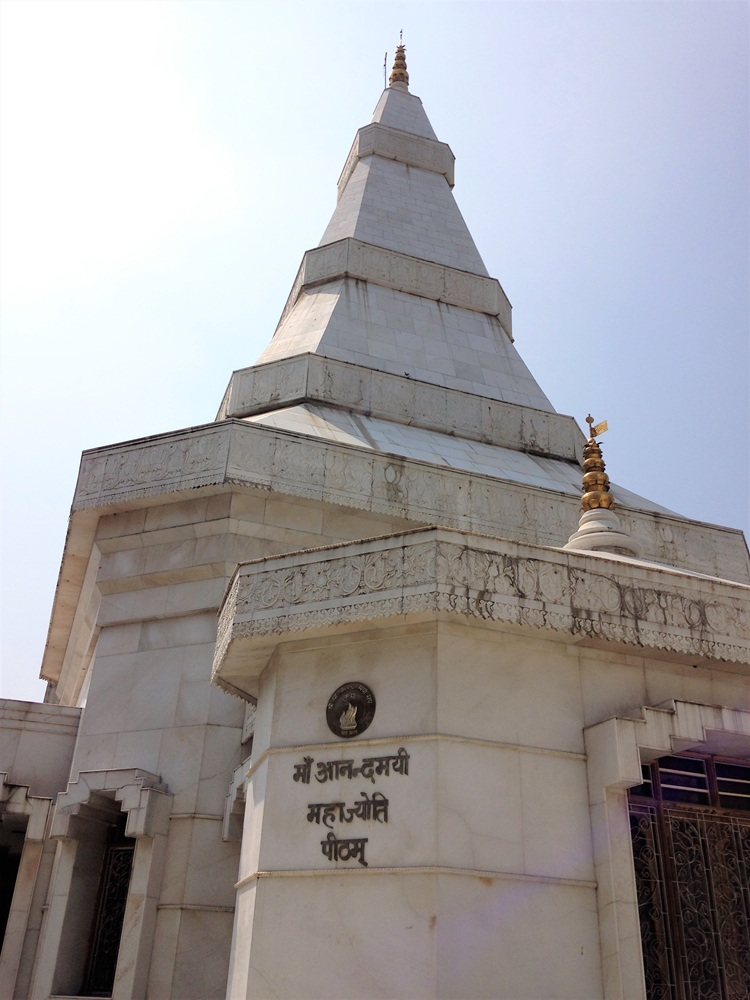
Walking Along the Ganga Canal in Haridwar
As our route joined the edge of the Ganga Canal, I noticed more and more large Dharmashalas (pilgrims’ rest houses) and grand private homes lining both sides of the street. Pilgrims have always traveled to Haridwar to bathe in the holy river, and bathing in the early morning carries special significance. Staying right on the river’s edge allows visitors to step directly into sacred waters at dawn.
To my left, I looked through the wide open entries of several Dharmashalas and houses. Massive doorways, resembling the gates of medieval castles, invited me to peer inside. I expected to find enclosed courtyards, yet I instead discovered something magical: halls that opened directly to the fast-flowing Ganga, with sunlight dancing on its surface.
From these riverside dwellings, people can walk straight down into the water, take a dip, and return for a warm cup of tea. That struck me as pure luxury. The morning light reflected off the Ganga and shimmered into marble-floored halls, creating one of the most romantic and timeless sights I have ever experienced. The peeling paint on the outer walls of many of these structures only deepened the charm, evoking a sense of ancient tradition that continues to flow with the river itself.
Approaching Kankhal and Daksh Mandir
I felt grateful to witness such beauty along the canal, because the rest of the walk grew increasingly noisy with morning commuters on scooters. As we approached Kankhal, the horns of vikrams carrying pilgrims to the Daksh Mandir filled the air. This large and important temple complex stands just over 100 meters from Maa Anandamayi Ashram Haridwar, and it attracts a steady flow of visitors each morning.
Before reaching Daksh Mandir, we made another fascinating discovery. We came across an old, grand building adorned with once-beautiful painted decorations. Time and neglect had pushed it into disrepair, yet life still pulsed through it, as several families appeared to live inside. The structure carried an undeniable charm, a glimpse of Haridwar’s layered history where faded grandeur coexists with everyday life.
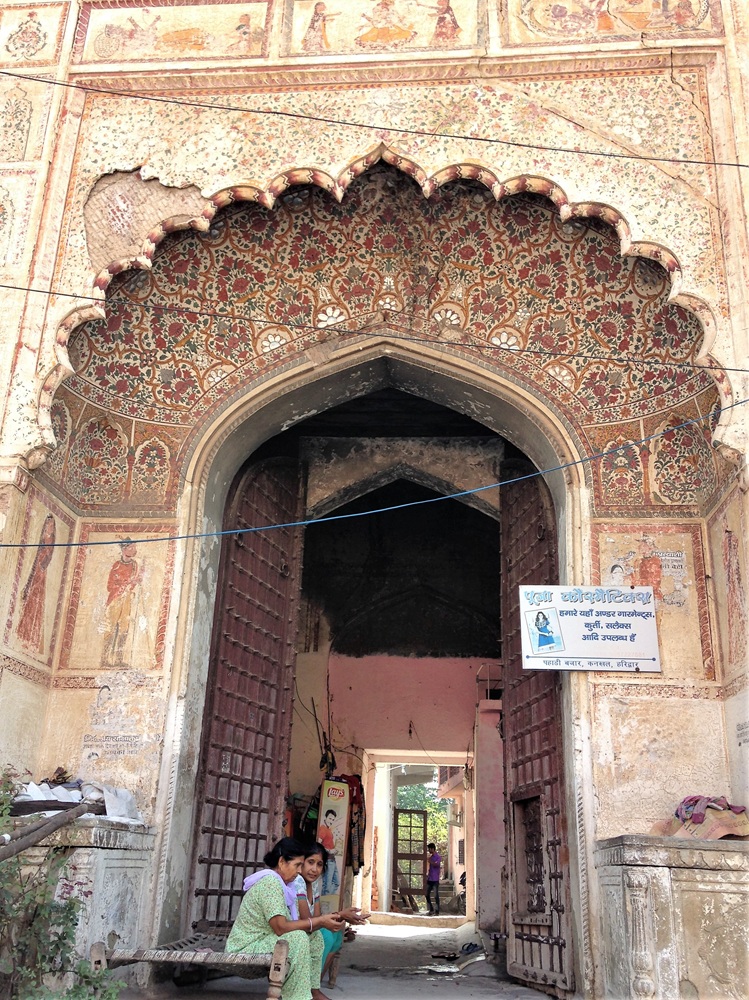
Reaching Daksh Mahadev Prajapati Mandir in Kankhal
Two friendly ladies chatted in front of the old building, but my limited Hindi prevented me from asking them about its history. If time allows before I return to Mussoorie, I plan to walk past it again, look for inscriptions, and try to learn when it was built and who once owned it.
By the time we reached the Daksh Mahadev Prajapati Mandir, we had walked for nearly an hour. The heat pushed toward 38°C (100°F), and the dust and constant traffic noise left us tired. We stepped gratefully into the temple grounds to rest.
The temple complex spreads out across a large area, with separate shrines dedicated to different Hindu deities. Among them, a shrine honors Sri Ganga, the river goddess who embodies the sacred Ganga itself. The peaceful atmosphere inside the complex offered welcome relief after the intensity of Haridwar’s busy streets.
Visiting Daksh Mandir and Maa Anandamayi Ashram in Kankhal, Haridwar
The atmosphere of Daksh Mahadev Prajapati Mandir felt peaceful despite the steady flow of visitors. Several large, old trees offered cool shade, and the priests at each shrine welcomed us warmly.
We walked down the temple stairs to the Ganga, where worshippers scooped water, poured it over their heads, sipped some with reverence, and prayed to the river goddess. Following the priest’s instructions, we too placed a little of Mother Ganga’s water on our heads and touched the marble carving of her feet. The cold, fresh river water felt wonderful on our bare feet after the long walk.
After visiting the shrines, we slipped our shoes back on and made our way to the nearby Maa Anandamayi Ashram Haridwar. At the office, we removed our shoes again and asked to visit Ma Anandamayi’s samadhi. A gentle older man instructed us to put our shoes back on, then kindly guided us out through the main gate and around the corner to re-enter through another entrance that led directly to the samadhi.
Suggested Read: Discover Haridwar city along the river Ganges in India
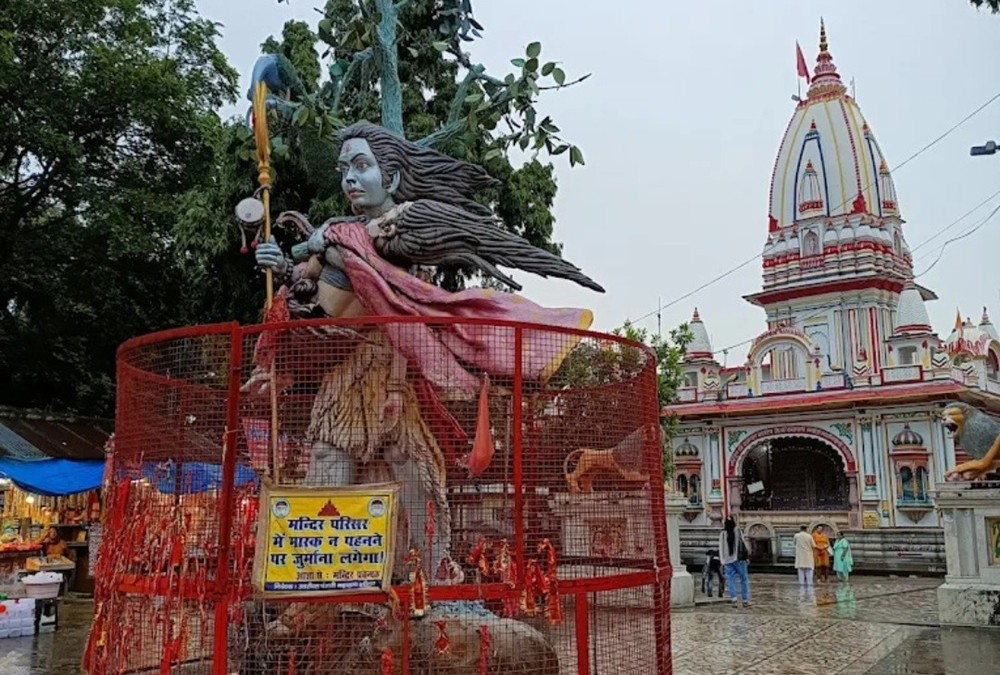
Maa Anandamayi’s Samadhi in Haridwar
The samadhi rests inside a large white marble mandir, beautifully surrounded by tended gardens and flowering plants. While it differs from the Almora ashram, the place radiates the same deep serenity. Silence is required inside, though one feels naturally inclined to fall quiet here.
The stone tomb, enclosed by a metalwork screen, lay covered in fresh flowers. A striking white marble statue of Maa Anandamayi stood beyond it, gleaming in the alcove. A frail elderly woman in a white cotton sari moved silently around the tomb, carefully placing and rearranging flowers.
From where we sat, both the tomb and statue seemed far away, almost as if I looked at them through a telescope. I watched the old woman, then noticed another emerge, followed by a tall man. The women pointed and gestured, apparently instructing him about maintenance on a ceiling beam. They seemed distant, like actors on a faraway stage, their gestures clear but their expressions hidden.
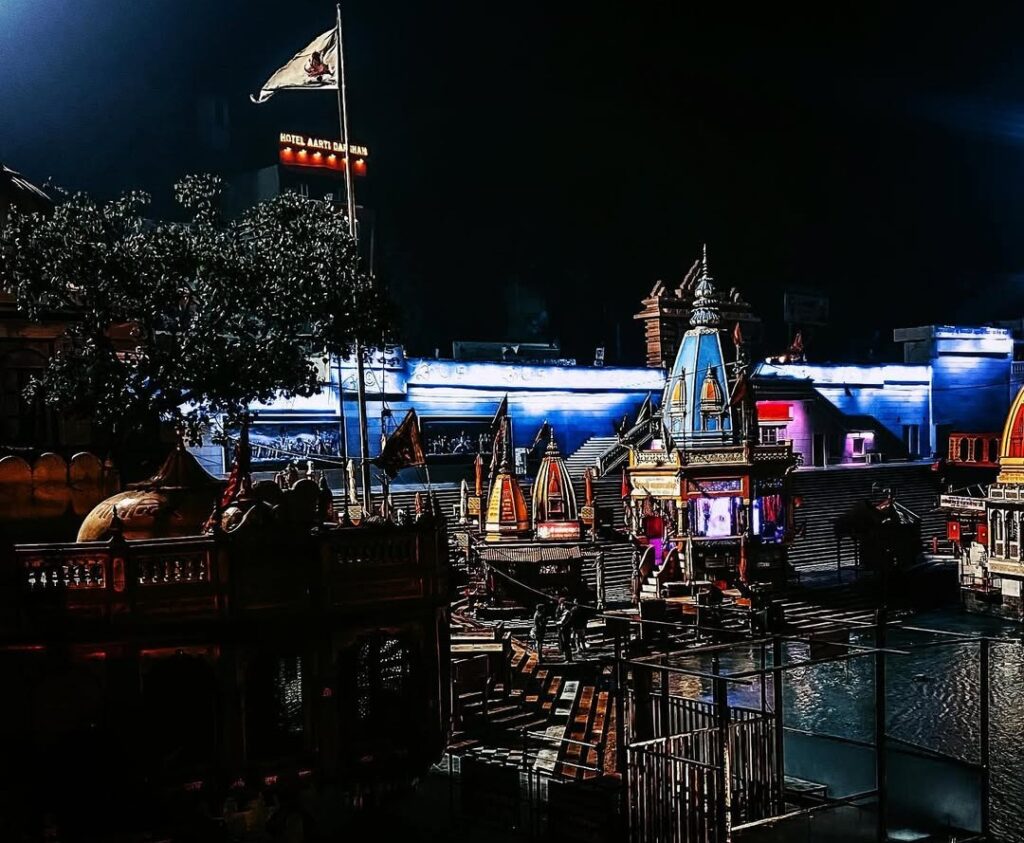
I sat with these impressions, distracted by the blaring horns outside the gate and the whirring of electric fans. My mind churned with everyday clutter until my eyes grew tired. I closed them, and silence descended. For a moment, I heard nothing—no traffic, no fans, only a phrase forming quietly within: “The being that one is.”
When I opened my eyes, the white marble statue of Maa Anandamayi had transformed. Though still distant, her features sharpened into vivid detail—her eyes alive, her cheeks and forehead glowing, her mouth softened into the suggestion of a smile. Her presence felt near and undeniable, like the full moon shining in the night sky.
Writers often speak of the “power of presence” at ashrams where the teacher has left the body. Today, in a new and deeply personal way, I experienced that enduring presence at Maa Anandamayi’s Samadhi in Kankhal, Haridwar.
Maa Anandamayi Ashram Haridwar Maa Anandamayi Ashram Haridwar Maa Anandamayi Ashram Haridwar Maa Anandamayi Ashram Haridwar Maa Anandamayi Ashram Haridwar Maa Anandamayi Ashram Haridwar Maa Anandamayi Ashram Haridwar Maa Anandamayi Ashram Haridwar Maa Anandamayi Ashram Haridwar Maa Anandamayi Ashram Haridwar

